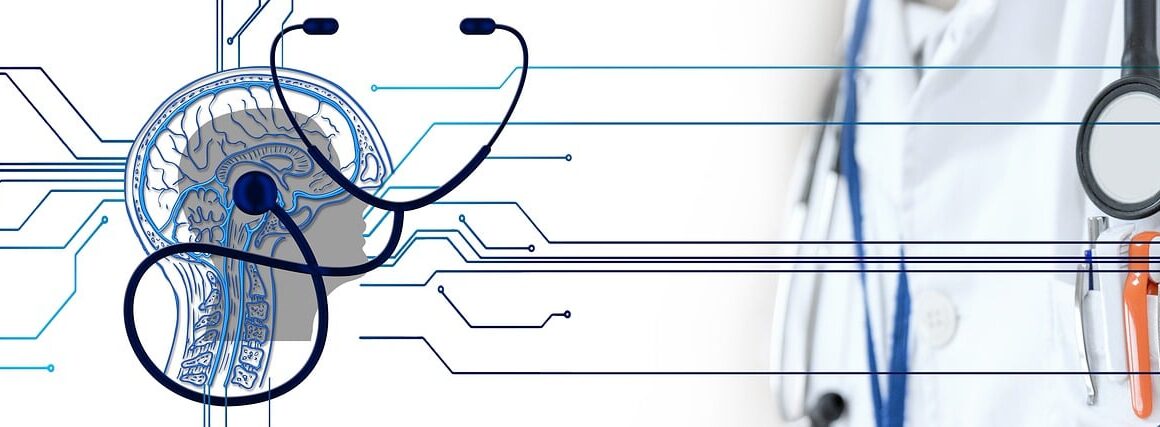Impact of Physical Activity on Alzheimer’s Disease Progression
Alzheimer’s disease (AD) is a progressing neurological disorder, representing the most common form of dementia among aging populations. This condition primarily impacts cognitive functions, leading to memory loss, impaired reasoning, and altered behavior. Understanding the role of physical activity in the progression of Alzheimer’s is vital for developing effective interventions. Numerous studies suggest a positive correlation between regular exercise and delayed onset of cognitive decline. Exercise can stimulate both neurological and psychological aspects of cognition, empowering pathways that contribute to better mental health. Engaging in physical activities not only promotes physical health but is also known to improve mood and decrease anxiety. Strategies like aerobic exercises, strength training and flexibility workouts can induce significant benefits. Furthermore, group activities enhance social interaction and community bonds, both crucial for mental agility. Tailoring exercise plans to accommodate individual preferences and capabilities is essential for ensuring longevity in these activities.
As research continues to unfold, the mechanisms by which exercise influences cognitive health are becoming clearer. Physical activity is known to enhance neurogenesis, a process that generates new neurons, particularly in the hippocampus area of the brain vital for memory. Studies illustrate that exercise increases levels of brain-derived neurotrophic factor (BDNF), a protein essential for neuronal survival and growth. Having high BDNF levels may protect against neurodegenerative diseases. Additionally, aerobic exercise plays a prominent role in improving blood flow to the brain, delivering necessary nutrients and oxygen, both of which are crucial for maintaining cognitive function. Engaging in regular physical activity leads to structural brain changes, mitigating the risk of Alzheimer’s progression. It is essential to understand that integrating physical activity in daily routines can be an achievable goal. Simple activities like brisk walking, gardening, or dancing can be beneficial to an individual’s overall cognitive health. Ensuring enjoyable, varied, and consistent physical experiences could prove pivotal to harnessing their benefits into the golden years.
Types of Exercise Beneficial for Cognitive Function
When exploring the types of exercises beneficial for cognitive function and potentially slowing the progression of Alzheimer’s, various modes of physical activity need to be considered. Aerobic exercises, including brisk walking, swimming, and cycling, have shown significant results in cognitive enhancement. These activities elevate heart rate and improve circulation, ensuring adequate oxygen and nutrients reach the brain, resulting in better brain health. Strength training also holds promise, as it helps in preserving muscle mass and maintaining strength, which is often lost with aging. This can subsequently support physical independence, vital for older adults. Flexibility exercises, such as yoga and stretching, contribute to improved posture and balance, reducing the risk of falls and injury. Furthermore, engaging in coordination activities like dancing can stimulate cognitive functions and provide social interactions that counter loneliness. Additionally, mind-body exercises such as tai chi have been shown to improve mental acuity, combining aspects of movement, meditation, and memory. A multi-dimensional approach to physical activity can yield a broader spectrum of benefits for individuals at risk of Alzheimer’s disease.
Understanding the importance of frequency and intensity is key for achieving optimal benefits from exercise, especially in the context of Alzheimer’s disease. Aiming for at least 150 minutes of moderate-intensity aerobic activity per week is a common recommendation. Physical therapists and trainers can create customized plans to meet the specific needs of individuals, taking into account their current physical state and health conditions. Incorporating strength training activities on at least two days a week can be beneficial for muscle preservation and overall functional fitness. Moreover, combining different types of exercise can lead to more significant improvement in cognitive functions. The mental challenge presented by learning new movements or routines can further stimulate brain function. Setting realistic, incremental goals can help build a consistent exercise habit, promoting adherence long-term. Engaging in activities that one enjoys is critical for sustaining motivation over time. Communities offering group classes or social opportunities for exercise can provide additional support, fostering social connections vital for mental wellbeing as well. Ultimately, consistency is fundamental when exploring the positive effects of exercise on Alzheimer’s disease progression.
Psychological Benefits of Physical Exercise
In addition to its physical benefits, exercise provides crucial psychological advantages, particularly instrumental for individuals facing cognitive decline. Regular physical activity can alleviate symptoms of depression and anxiety, which are common comorbidities among those with Alzheimer’s disease. Exercise releases endorphins, often referred to as ‘feel-good’ hormones, which uplift mood and foster an improved sense of wellbeing. Moreover, exercising can provide a firm structure to daily routines, offering purpose and an opportunity for social interaction which helps combat feelings of isolation. Engaging in group activities encourages members to bond over shared experiences, fostering a sense of community that is essential for mental resilience. Through these social engagements, individuals forge meaningful connections, enabling support networks crucial for mental health. Additionally, mind-body exercises, such as tai chi, promote mindfulness and can help individuals focus on the present moment, mitigating feelings of distress. Thus, the psychological advantages gained through physical activity present a dual benefit: enhancing mood and combating cognitive decline simultaneously. Creating a positive looping effect where mental and physical health progress together remains paramount in managing Alzheimer’s disease over time.
Accessibility and availability of exercise resources can significantly affect an individual’s ability to engage in regular physical activity, especially for elderly populations at risk of Alzheimer’s disease. Communities must foster environments that encourage safe and enjoyable exercise. Establishing accessible walking paths, offering fitness classes tailored to older adults, and providing health-focused community events can nurture an active lifestyle. Supporting local gyms with senior discounts or free classes could also incentivize participation. Programs aimed at educating about the benefits of physical activity for cognitive well-being must be made widely available. Collaboration with health professionals can result in tailored programs that take into account the unique needs of older adults. Moreover, family support plays a crucial role in encouraging physical activities. Family members can participate in exercises with their loved ones, making physical activity enjoyable and inclusive. Building habits around regular activity not only impacts physical health but positively influences social bonds and mental wellbeing. Ultimately, fostering healthier communities emphasizes the integration of exercise as a central component of Alzheimer’s care strategies. Everyone has a role in encouraging engagement in activities that promote longevity and optimal health.
Conclusion: Integrating Exercise into Daily Life
In conclusion, integrating physical activity into daily life is crucial in the context of Alzheimer’s disease. Multiple studies underscore its efficacy in attenuating cognitive decline, contributing to both physical and psychological health improvements. A focus on the types and frequencies of exercises can lead to beneficial outcomes. Engaging in social interactions, incorporating enjoyable activities, and setting achievable goals are paramount in fostering sustainable habits. Healthcare administrators and community leaders must collaborate to provide accessible resources, allowing individuals to take charge of their health proactively. Tailored programs should address the unique capabilities and preferences of older adults. Continued education on the cognitive benefits of exercise remains significant in encouraging a more active lifestyle. This holistic approach not only enhances quality of life but instills hope in those experiencing early cognitive impairments. Families, communities, and individuals must work together to create environments conducive to physical activity. As awareness grows, the focus on preventive measures and caring for cognitive health through exercise will become an integral part of public health initiatives. With commitment and dedication, exercise can serve as a powerful tool in the fight against Alzheimer’s disease and improve outcomes for individuals and families alike.
Further research is essential to understand the long-term impact of various exercise modalities on Alzheimer’s disease. As we continue to gather evidence, the collaboration between scientific communities and healthcare practitioners will yield valuable insights. Informed, adaptable approaches will foster innovative strategies. Encouragement, support, and education regarding the significance of regular physical activity can empower individuals to make positive lifestyle changes. Through awareness, we can perceive exercise as more than an obligation; it becomes a transformative experience enhancing life’s quality. Moreover, navigating the challenges of cognitive decline can be easier with collaborative efforts among healthcare providers, families, and community resources. Tailored programs catered to the individual needs of older adults can lead to improved adherence to exercise regimes. Harnessing the collective strength of communities will ensure the sustainability of these initiatives. Ultimately, addressing Alzheimer’s in conjunction with promoting physical activity can lead to a future where the burden of cognitive decline lessens. As we advocate for a culture that values health through activity, we create a legacy of hope and resilience for generations to come. Embracing the power of exercise offers a clear pathway to a brighter future.


